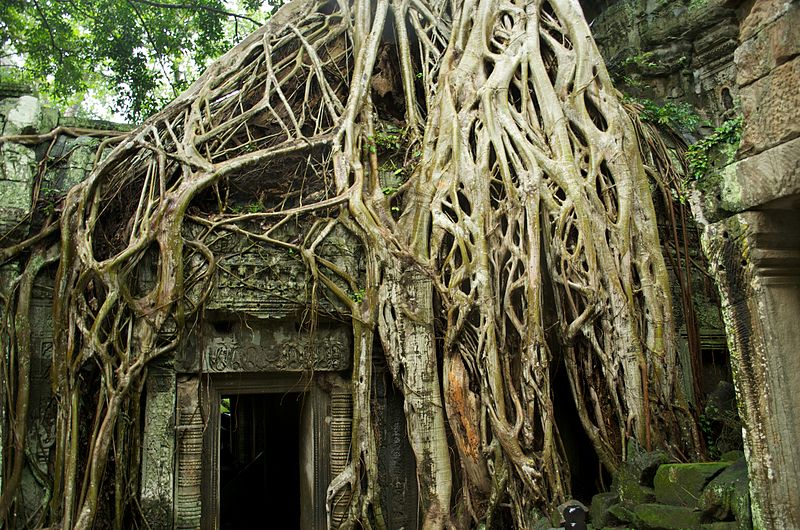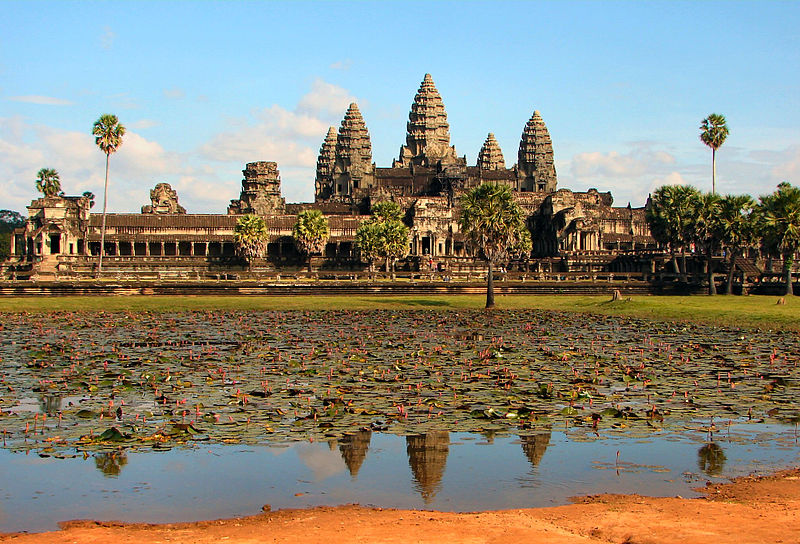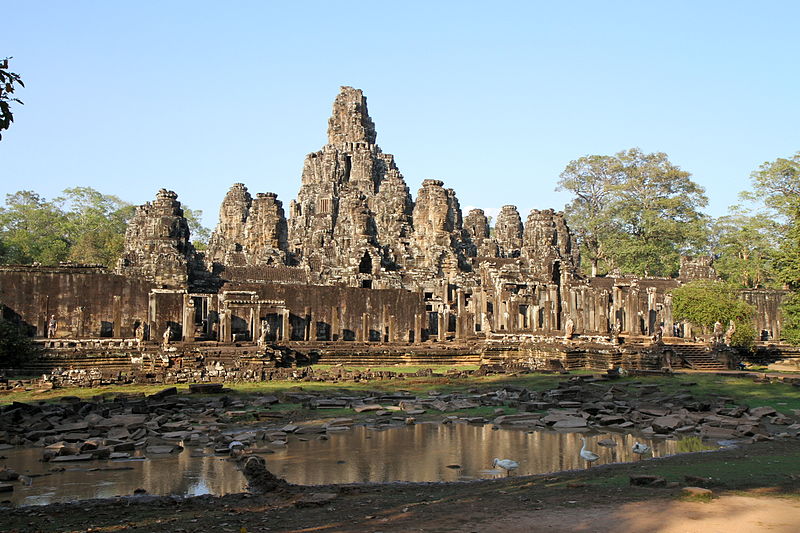
The Angkor Archaeological Park in Siem Reap, Cambodia is one of the world’s most popular ruin sites. Once home to the great Khmer Empire, the Angkor region prospered from the 9th to the 15th century before being mostly abandoned. More than a thousand temples in the region were overgrown and hidden by the forest until being literally unearthed by French explorers in the late 19th century. Restoration efforts began in 1907 and continued until the brutal Cambodian civil war began in 1970, and resumed in 1993 as an international effort to protect a world treasure.
Today many of the ancient temples have been rediscovered and restored to their former glory, and are open to the public in the Angkor Archaeological Park and beyond. With more than a thousand temples in the area, however, you probably won’t have the time (or desire) to see them all. Make the most of your time in Siem Reap by seeing the most interesting and representative temples of the Khmer Empire.
Angkor Wat
Make sure to start your journey at Angkor Wat. Easily the most well-known of the park’s ruins, Angkor Wat has become a symbol of Cambodia and is featured on the Cambodian national flag. It was built in the 12th century, and is impressive in both its size and its detail. The temple is surrounded by an enormous rectangular man-made moat, stretching nearly 1500 m in each direction and 190 m wide. After crossing the bridge at the main entrance, you’ll reach the outer wall and enter the grounds.
Angkor Wat is enormous, and it’s easy to spend hours examining the detailed and well-preserved wall carvings. If you want to understand the story told by the carvings, however, you’ll need an official guide to explain. Explore the massive grounds around the temple before climbing the frighteningly steep steps to the upper level, where you’ll have an incredible view of the temple and grounds below you. Remember that you’ll need appropriate clothing (pants and sleeves) to ascend and the gatekeepers are very strict, so keep a jacket in your backpack and buy a $5 pair of “Cambodian tourist pants” in the parking lot before you enter. If you arrive very early on a cloudless morning, you may even get the rare chance to see the sun rise behind the temple.
Bayon
No tour of Angkor is complete without a visit to Bayon, the famous “faces” temple. Located within the walled city of Angkor Thom, Bayon is one of the most popular temples in the park. It was built in the late 12th century, and features around 200 carvings of giant faces on 37 towers. The temple also features two impressive bas-reliefs. Whereas Angkor Wat is widely spread and has lots of open space, Bayon is the opposite; it is compact, giving the feeling that too much stone was squeezed into too small an area. However, this isn’t a flaw, and many people say that Bayon is their favorite temple. Bayon is especially beautiful in the rainy season, when the frequent rains cause moss to grow and the wetness brings out different colors in the stone.
Ta Prohm
Known as the “Tomb Raider temple,” this temple gained fame after being featured in the 2001 movie starring Angelina Jolie. Unlike Angkor Wat and Bayon, this temple has a more simple single-story architecture and is more overgrown by the surrounding forest. Enormous trees have grown up and over the walls and structures of Ta Prohm, creating a dramatic battle between the forest’s natural progression and human restoration efforts. Due to its movie-star status, Ta Prohm can become very crowded with tour bus groups, so try to visit this site first thing in the morning before the buses arrive. This site also gets very muddy in the rainy season, so wear appropriate footwear.




